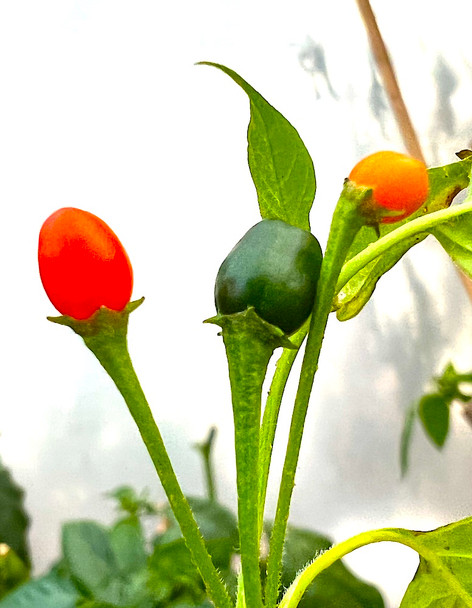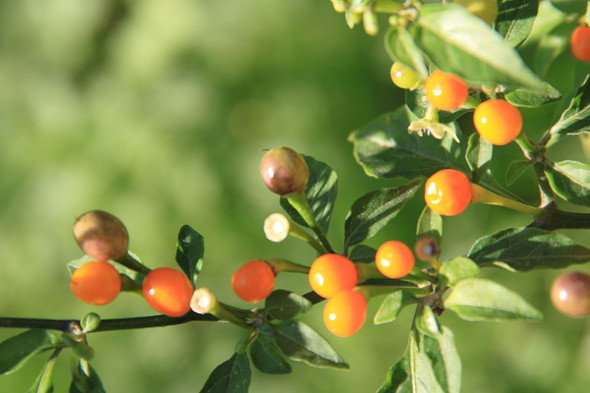Description
Chilli Name: CAPSICUM MICROCARPUM
Chilli Species: Microcarpum
Chilli Origin: Bolivia, Argentina, Paraguay
Chilli Heat: Unknown
Capsicum microcarpum — An Old Name for a Familiar Wild Chilli
Capsicum microcarpum is a historical name that once referred to a group of small-fruited wild chillies, particularly from Bolivia, Argentina, Paraguay, and parts of Brazil. Today, however, it is no longer considered a separate species. Modern taxonomy recognises it as a synonym of Capsicum baccatum var. baccatum — one of the oldest and most widespread wild or semi-domesticated chillies in South America.
The plant typically grows as a shrubby, sprawling bush, well-suited to dry, open areas and poor soils. It produces small, upright pods that ripen from pale green to bright red, often with a sharp heat level in the 30,000–50,000 Scoville range. Its flowers are classic baccatum in appearance, with distinct yellow or green spots on the petals — a useful feature for identification.
Despite the name “microcarpum” meaning “small-fruited,” this is simply a wild form of baccatum rather than a species of its own. These chillies are still commonly found growing wild in fields, roadsides, and forest margins across the southern parts of South America, where they’re often referred to as “wild aji” and occasionally used in traditional sauces.
While the name Capsicum microcarpum still appears on old herbarium labels or seed packets, it has been officially retired in favour of the more accurate classification: Capsicum baccatum var. baccatum. Still, it remains an important part of chilli biodiversity — a hardy, spicy relic of the wild chilli landscape.



